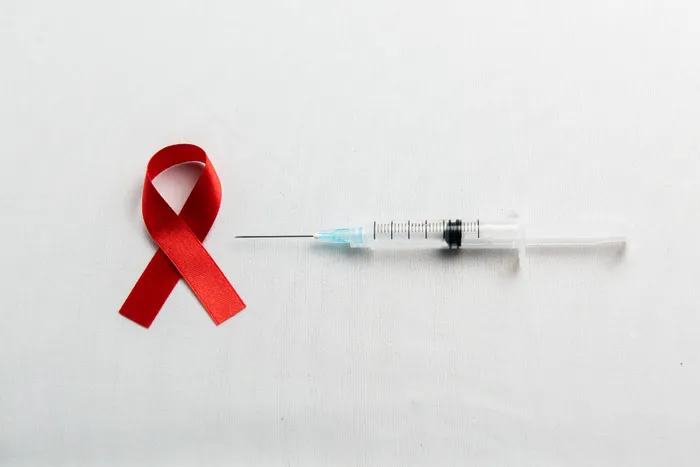National HIV survey: 7.8 million South Africans living with HIV, concerns raised over no condom trend among youth

The Human Sciences Research Council (HSRC), in collaboration with its partners, announced the findings from the 2022 survey which was conducted across all nine provinces among participants of all ages from January 2022 to April 2023. File Image
There are approximately 7.8 million people living with HIV in South Africa which is a decrease from 14% in 2017 to 12,7% in 2022, according to the sixth South African National HIV Prevalence, Incidence and Behaviour survey (SABSSM VI) which was released on Monday.
However, while the number of people living with HIV has decreased, concerns have been raised around the increase in HIV positive youths aged between 15 and 24 and the unfortunate trend of very low condom use in the same age group.
In addition, KwaZulu-Natal, Mpumalanga, Eastern Cape and Free State provinces were ranked highest in HIV prevalence among adults 15 years and older.
The Human Sciences Research Council (HSRC), in collaboration with its partners, announced the findings from the 2022 survey which was conducted across all nine provinces among participants of all ages from January 2022 to April 2023.
The survey was conducted in more than 27,000 households. Among people aged 15 years and older, the impact of the HIV epidemic in South Africa was unequal across geographic regions and populations, particularly affecting black Africans, women, and young people.
HIV prevalence varied geographically, ranging from 8% in the Western Cape Province to 22% in KwaZulu-Natal province.
HIV prevalence was nearly twice as high among women (20%) compared to men (12%). By race, HIV prevalence was the highest among black Africans (20%), followed by Coloureds (5%), and lowest among Whites and Indian/Asian people (1% each).
“The most pronounced differences in HIV prevalence by gender were seen among younger populations which calls for focused interventions. Compared to males of the same age groups, HIV prevalence was approximately two-fold in females aged 15–19 years (5.6% vs 3%, respectively), and 20–24 years (8% vs 4% respectively), and three-fold higher in females aged 25–29 (20% vs 6%, respectively),” said Professor Khangelani Zuma, Divisional Executive of the Public Health, Societies, and Belonging Division of the HSRC and the overall Principal Investigator of the survey.
The 2022 survey showed that South Africa has made significant progress toward the United Nations AIDS 95-95-95 targets – namely, that by 2025, 95% of all people living with HIV to be aware of their HIV status, 95% of those aware of their status to be on antiretroviral treatment (ART), and 95% of those on ART who also know that that they are living with HIV to achieve viral load suppression.
SABSSM VI showed that among people aged 15 years and older living with HIV in South Africa in 2022, 90% were aware of their status, 91% of those aware of their status were on ART, and 94% of those on ART were virally suppressed.
This was an improvement compared to 2017 when the UNAIDS target was 90-90-90, but South Africa achieved 85%-71%-87%.
The large uptake of treatment can be attributed to the changes in treatment guidelines in 2016, which made provision for treatment to be given to everyone requiring HIV treatment immediately, regardless of their clinical status, which previously needed to include a CD4 count below 500 cells/mm3.
The survey showed that 81% of people aged 15 years and older living with HIV in South Africa were virally suppressed in 2022 compared to 62% in 2017.
Viral suppression was higher, at 83%, among women when compared to men, at 79% and lower at 70% among younger adults aged 15–24 years. The lowest percentage of viral load suppression was at 66% among men aged 25–34 years old.
According to the survey, half of all young men aged 15–24 years were medically circumcised compared to 43% in 2017. This was an important achievement as studies have shown that male circumcision can reduce the risk of heterosexual HIV transmission by approximately 60%.
Reflecting on the importance of the survey, the CEO of the South African National AIDS Council (Sanac), Dr Thembisile Xulu welcomed and endorsed the latest of the SABSSM survey.
She said this survey remained one of the most critical data sources used by Sanac to inform the country’s five-year National Strategic Plan for HIV, TB and STIs.
“It provides a comprehensive breakdown of the status of the HIV epidemic, thus enabling us to design programmes and interventions that are not only targeted, but also nuanced and geo-specific. We look forward to the launch of the full report in the new year,” Xulu said.
Over the last 20 years, the HSRC has worked with partners including the Centres for Disease Control, the South African Medical Research Council (SAMRC), the University of Cape Town (UCT), and the National Institute for Communicable Diseases(NICD) on behalf of Sanac to implement a series of population-based surveys on HIV.
SABSSM VI marks 20 years of the survey series, with the first survey commissioned and funded by former President Nelson Mandela through his Foundation in 2001.
Related Topics: